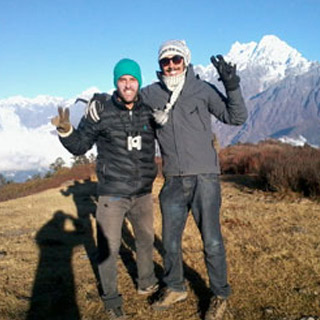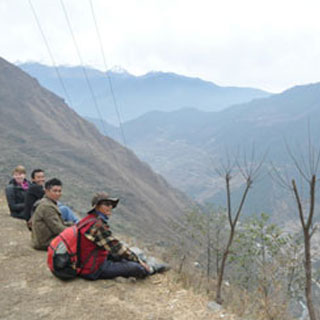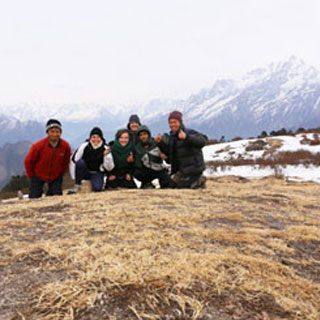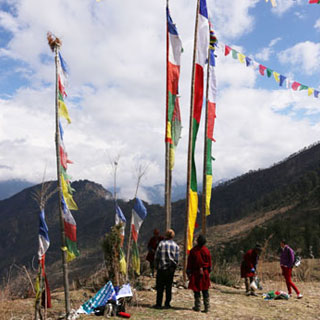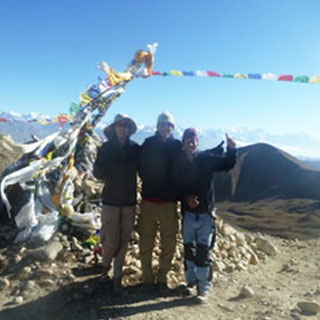Tsum Valley Trek
Trip Key Information
- Price:US$ 2355
- Duration:17 Days
- Destination:Nepal
- Grade:Moderate to Strenuous
Destination: Nepal
Transportation: Private Vehicle
Max. Altitude: (4,060 m) Visit Dhephyudonma Gompa
Trek Distance: 178km Approx.
Bast Season: Septembe-November & March –May.
Special Interest: Cultura, Natural walk, photography, Environmental education, Family visit.
Itinerary: Fixes or customized (Group, single, or senior packages availanle)
Groupsize: 2 people
Group size max: 12 people.
Hide DetailManaslu Valley Trekking
The Tsum Valley is both a superb introduction to Trekking in Nepal and a cultural adventure amongst some of the most beautiful scenery in the whole country, with rich Tibetan culture, amazing natural scenery and awesome mountain vistas.
The sacred Himalayan pilgrimage valley “Tsum Valley” situated in Nepal mid western part of Gorkha districts nearby Tibetan Border. ‘Tsum’ derived from Tibetan word ‘Tsombo’ which means vivid. Traditionally, Tsum Valley was a currently distinct geographical area called 'Tsum Tso Chucksums', which means thirteen provinces ruled as a single territory. Beside the majestic backdrop of the snowcapped Himalayan ranges, this tranquil Himalayan valley is rich in ancient art, culture and religion. The local people of Tsum Valley are of Tibetan origin “Gurung ethnic groups” practice Buddhist religion, speak their own dialect and they have their own culture and custom. The varies altitude of Tsum Valley trek begins from 1,905m in Lhokpa to over 5,093m at Ngula Dhojhyang pass on the Tibatan border. The hidden Tsum valley is surrounded by the Boudha Himal and Himal Chuli to the west, Ganesh Himal to the south and Sringi Himal to North. Unique natural beauty, Mountains, Landscape, its pristine culture and Tradition similar as Tibet people of here are main appeal of the Trekking in Tsum Valley trek.
The trial of Tsum Valley Trekking is strewn with artistic Chortens and lined with Mani walls made of thousands of stone slabs carved with drawings of deities and inscribed with prayers. The famous Kyimo Lung, a pilgrimage circuit in the central Trans-Himalaya is a well known seat of learning and meditation. Local believed that Buddhist saint Milarepa meditated in the caves of these mountains, so this place is holey. Tsum valley preserves steps of the great Buddhist Yogi Chyuchin Milarepa and story about Guru Padmasambhava circumbulation. The people here never slaughter animals, even as sacrifice to the gods. People in Tsum Valley still follow polyandry system and they have their own unique culture, tradition, and dialect. Tsum people celebrate unique festival like Lhosar, Dhacyhang, Saka Dawa, Faning and others. Many residents of this valley report that they have seen or found the signs of Mehti, commonly referred as the 'Yeti' or 'Abominable Snowman'. Upper Tsum valley (part of the inner Himalaya) opens from remote VDCs Chhekampar and Chumchet (Lower Tsum), where hospitable local people (Tibetan group "Tsombo") welcome you with traditional Tibetan Chiya (butter tea) and local meal. The Tsum Valley is extremely rich in cultural assets. It is so remote that the ancient relics are still seen. The valley is dotted with Gumbas (Buddhist monasteries), chortens and mani walls. The longest mani walls (over 250m) are at Dzong and Phurpe. Due to its remoteness and inaccessibility, this sacred valley and its people have been bypassed by mainstream development for centuries. As a result, the unique culture of this valley has remained intact. The restricted area Tsum Valley Trekking begins from Arughat in Gorkha district, which is easily accessible from Kathmandu and the trail, follows the winding Budi Gandaki River through wild and unexplored country inhabited mainly Gurung until it reaches the first elevated Tsum Valley with magnificent vistas of the Ganesh Himal and other surrounding peaks. The Valley is bounded by high passes - the Ngula Dhoj Hyang (5,093 m) to the west and Yamdro Pass (5,326m) to the north. Tsum Valley Trekking is possible to make shorter and longer as our Clients demands; most of trekkers do this trip via the Larka La Pass then over in Besi Sahar but some trekkers continue their trek to Annapurna circuit, Tilicho Lake or Narphu valley as well as Rupinala Pass. So, it is also possible just 19 to 29 days Tsum valley Trip begins and end same point in Arughat. Trekking in Tsum Valley use to operate mostly camping basis / tent camp treks but now a day’s it is possible simple Teahouse Trekking (stay in the lodge) or Home stay Trek. Off the beaten trail Tsum Valley Trekking offers you ultimate experience in your lifetime.
Himalayan Unforgettable Adventures organize recently open “Tsum Valley Treks” any time all over the year except snowing season with our highly experienced guides and staffs according our Clients requirement and holiday schedule. But the best time is September, October, November and March, April, May. This is recommended only for highly qualified and adventurous people who love to test adventure travel in Nepal Himalaya adopting real rural lifestyle. Come and join us for a life changing experience – with Himalayan Unforgettable Adventures!
Day to day outline itinerary
- Day 01:Arrive at Kathmandu,
- Day 02:Kathmandu Valley Sightseeing pre- Treks (1,350m)
- Day 03:Kathmandu to Machha Khola (930m) -7,8 Hours
- Day 04:Trek Machha Khola to Doban (1,070m) -6 to7 Hours
- Day 05:Doban to Philim (1,570 m) -5 to 6 Hours
- Day 06:Trek Philim to Chumling (Lower Tsum) (2,361m)-6 to 7 Hours
- Day 07:Trek Chumling to Chhekampar (Upper Tsum) (3,010 m) -5 to 6 Hours
- Day 08:Trek Chhekampar to Chhule-Nile (3,361m)
- Day 09:Trek Chhule-Nile to Mu Gompa (3,700 m), visit Dhephyudonma Gompa (4,060 m) -3 to 4 Hours
- Day 10:Extra day for excursion This is day of leisure,
- Day 11:Trek Mu Gompa to Rachen Gompa (3,210 m) -5 to 6 Hours
- Day 12:Trek Rachen Gompa to Dumje (2,405m) -6 to 7 Hours
- Day 13:Trek Dumje to Philim (cross Ripchet) (1,570 m) -6 ½ to 7 ½ Hours
- Day 14:Trek Philim to Tatopani (875m) -6 to 7 Hours .
- Day 15:Tatopani to Kathmandu 8, 9 Hours
- Day 16:final Departure to your Destination
- Day 17: OPTION
Cost Details
Cost Include
- All airport/hotel/land transfers by private or public vehicle unless otherwise requested
- Accommodation in Kathmandu with breakfast.
- Welcome and farewell dinner.
- Camping / teahouse accommodation during the trek with all meals included
- Sightseeing tours in Kathmandu, Paten and Bhaktapur including a tour guide and entrance fees (if the option is chosen)
- Experienced trek leader, assistant guide and Sherpa porters including their salaries, insurance, equipment, flight, food and accommodation.
- All necessary permits (national park entrance fee, TIMS).
- A comprehensive medical kit.
- All government and local taxes wherever applicable
Cost Exclude
- Nepal visa fee ($30 and two passport photographs are required).
- International airfare to and from Kathmandu
- Excess baggage charges
- Lunch in Kathmandu, unless requested for
- Extra accommodation nights other than stated in the itinerary.
- Travel and rescue insurance
- Personal expenses (phone calls, laundry, bar bills, battery recharge, extra porters, chocolate, beverages, showers etc)
- Tips for guides and porters
Useful Info
The Tsum Valley Restricted area. Tsum Valley trek permit costs USD 40.00 for the first 7 days and USD 7.00 each additional day from September to November. Tsum Valley trek permit costs USD 30.00 for the first 7 days and USD 7.00 each extra day from December to August. Manaslu Conservation Area Permit (MCAP) Per person, for SAARC USD.10 per person, and for other Nationals USD.30 per person. guide is compulsory this areas
Note
we try to follow the itinerary below, at times local trail or weather conditions may make slight changes necessary. The trekking itinerary may also vary slightly depending on our trekkers' acclimatization condition.
Detail Itinerary
Day 01Arrive at Kathmandu, Upon arrival at international airport, our waiting support team will meet and greet you at the airport assist and transfer to the Hotel (star category, very nice and centrally located at Thamel, take rest and free at afternoon.
Day 02Kathmandu Valley Sightseeing pre- Treks (1,350m) Our Tour Guide led you to explore around Kathmandu valley for the sight seen. Have explore historical and spiritual attractions; including the historic Durbar Square, Bouddhanath; one of the largest stupas in Nepal, Swayambhunath; top on the hill in the city knows as the Monkey Temple, Pashupatinath; Hindus holy place, Sadhus and pilgrims bathing at occasionally, funeral pyres burning on the ghats, located on the holy Bagmati river. After these activates back to hotel and pre- prier for the treks. Stay overnight at hotel. Please, check your insurance details and have a copy of your travel medical insurance policy with you.
Day 03Kathmandu to Machha Khola (930m) -7,8 Hours On this day, we will drive to Machha Khola. The bus ride will be a special one as we will leave the city and cross through several towns and rural areas. We will see terraced farm fields, forests, and blue rivers. The even road will come to an end, and we will take the off-road until we reach Machha Khola via Arughat.
Day 04Trek Machha Khola to Doban (1,070m) -6 to7 Hours The trail involves some steep ascents and descents to the Doban. The trail gives the glimpses of diversity of flora & fauna, and people with different religion and cultures. We ascend a well – crafted staircase over a ridge to Doban. Doban means confluence of the stream, where Shiar Khola comes from the east, and the Sarpu khola meet from the west. We set our camp here or stay overnight at tea house.
Day 05Doban to Philim (1,570 m) -5 to 6 Hours After hot breakfast, journey leads us to ascend on a rugged rocky trail. Then we climb up and down ravines and notched trees. Several water falls on both side of the Budhi Gandaki River and hundred species of Birds in the forest makes our trip enjoyable. Liding, Machhakhola, Jagat and Philim provide the unique hospitality with culture and religion. During this trekking the narrow valley shaping by Budhi Gandaki provides the magnificent vistas of Ganesh Himal, Shringi Himal and Himal Chuli, as we continue up to the large Gurung village and fields of corn and millet. There are several good campsites and we set up camp surrounded by alder, blue pine and poplar trees or stay at the tea house.
Day 06Trek Philim to Chumling (Lower Tsum) (2,361m)-6 to 7 Hours The trail goes up through Philim and head up over a ridge that leads to Ganesh Himal Base camp and Chumling (Lower Tsum). We camp for the night at Chumling. Each individual can enjoy with songs of Bird and roaring sound of river on the trail. There are several good campsites at Chumling. Or stay overnight at local house.
Day 07Trek Chumling to Chhekampar (Upper Tsum) (3,010 m) -5 to 6 Hours After breakfast, we trek to Chhekampar. Upper Tsum valley (part of the inner Himalaya) opens from Chhekampar/Chhekamparo. This village situated on flat land and made up of two settlements Chhekam and Paro. From the valley, we have view of Ganesh Himal range in front to the south where it provides spectacular views of the Baudha and Himal Chuli peaks to the south-west. Some households in this village practice polyandry system. We stay overnight here.
Day 08Trek Chhekampar to Chhule-Nile (3,361m)We visit Milarepa Piren Phu Cave on the way -6 to 7 Hours On the way we pass the Piren Phu cave. Piren Phu (pigeon cave) is one of the most sacred caves in the Tsum valley. It is located at the foot of a rugged cliff near the village of Burji. Milarepa, the famous Tibetan saint, was believed to have meditated here. There are two separate Gumbas attached to the rocky cave. Richly painted Buddhist murals, excellent artistic scripts carved on stones, long prayer flags and significant Buddhists paper scripts make this cave one of the most important socio-cultural asset in the valley. Beautiful views can be had of the Shiar Khola, Rachen Gumba, the mountains and settlements amidst vast agricultural land. This is the last village heading north of the upper Tsum Valley. Stay overnight.
Day 09Trek Chhule-Nile to Mu Gompa (3,700 m), visit Dhephyudonma Gompa (4,060 m) -3 to 4 Hours After breakfast, the trail gradually ascends to Mu Gumba (1895 AD), the largest monastery in the region and farthest point in the Tsum valley. The monastery houses religious books, including Kangyur, a life sized statue of Avalokiteshwara, and images of Guru Padmasambhava and Tara. Chhosyang Tal is about two to three hours uphill walk.Then we visit Dephyudonma Gumba is one of the oldest monasteries in the Tsum Valley and is situated in the rugged mountains, a 2 hr walk from the village of Chhule and Nile. The history of this monastery is directly associated with the dawn of Buddhism in the valley. The monastery is run by Lama Serap of Nile Ladrang from the Kangin sect. There are a few campsites and drinking water facilities.
Day 10Extra day for excursion This is day of leisure, After having late breakfast hike up Mu Gumba and reach the base of Pika Himal (4,865m).We are quite close to Tibet and get a good view of the Tibetan peaks as well as the beautiful Ganesh Himal range. We may visit to Rikang Gompa and Dheron Gompa this day. After the day's excursion we return to our camp at Mu Gumba.
Day 11Trek Mu Gompa to Rachen Gompa (3,210 m) -5 to 6 Hours We take the trail to Rachen Gumba, a nunnery. It is situated in the Shiar Khola Valley in the foothills of the mountains bordering Nepal and Tibet. Rachen Gumba was established in the year 1905 AD and is one of the largest nunneries in the Tsum valley. It is belong to the Ngak-pa sect, which does not allow animal slaughter. The nunnery houses one thousand clay, mud statues of Avalokiteshwara, a brightly colored, carved throne and pillar, and a large prayer wheel. The interior is richly painted with murals about Buddhism and its history. We stay overnight at camp or local house.
Day 12Trek Rachen Gompa to Dumje (2,405m) -6 to 7 Hours Today, we proceed towards Dumje, is small and scattered settlements with some houses and adjoining cattle sheds. Dumje is wide flat land, good for cultivation especially barely and potato. Where, patches of purple-hued amaranth interspersed with fields of brown barley, dozens of yaks grazing in grassy meadows, rustic stone houses hugging the trail, long stretches of hand-carved mani stones and stacked mani walls, ancient villages dotting the landscape, rock chortens perched high on ridges, snow-capped Himalayan peaks scratching the deep blue sky, high remote mountain passes threading into Tibet, maroon-robed Buddhist monks and nuns fingering prayer beads, and hard-working kind-hearted villagers warmly welcome you into this scenic and soaring valley where Tibetan culture is still celebrated today.
Day 13Trek Dumje to Philim (cross Ripchet) (1,570 m) -6 ½ to 7 ½ Hours After breakfast, we are heading to Philim and cross Ripchet. We pass one of the most beautiful waterfalls in the Lower Tsum Valley, Samba Tingding Chhupyang. This is the village which lies along the trial from Gumpa Laundang to Philim. The houses are completely built from stone and roofs are pine wood. The houses are associated in linear pattern along the trial. There are remarkable numbers of Mani walls, Chortens and gateway chortens. We make camp in Philim for overnight stay.
Day 14Trek Philim to Tatopani (875m) -6 to 7 Hours . From Phillim we trek to Tatopani (hot spring) about 6 to 7 hours, most of the trail is descend. You can relieve your tired muscles from many days by soaking yourself in the hot spring. We make camp here for overnight stay or stay in local house
Day 15Tatopani to Kathmandu 8, 9 Hours We will be ready at 7:00 morning to having breakfast or advice as your trekking guide or you’re wise. We will back to Kathmandu through the road passing terraces, streams, rivers, local settlements, high hills and along the same road. It takes about 8 to 9 hours (conditional) to reach your hotel in Kathmandu by bus.
Day 16final Departure to your Destination Today is free or last minute shopping for souvenirs or gift to your family, friends or relatives for you until departure flight/drive. Nepal Mother House Treks assist will be transfer to the International Airport for your departure flight to your onwards destination.
Day 17 OPTION Days 10: Itinerary
Day 1:
Kathmandu to Machha Khola
On this day, we will drive to Machha Khola. The bus ride will be a special one as we will leave the city and cross through several towns and rural areas. We will see terraced farm fields, forests, and blue rivers. The even road will come to an end, and we will take the off-road until we reach Machha Khola via Arughat.
Day 2: Trek from Machha Khola to Jagat
The trail is pretty simple on this day as we encounter moderate climbs. We will pass through a forest and will cross several suspension bridges. We will also come across pasture lands and terraced fields. We will finally reach Dovan. After some hours of walk, we will reach the village of Khorla Besi. After a gentle incline, we will head to Tatopani. Tatopani has natural hot springs; if you are interested, you can spend some quality time here. We will continue with our journey and then cross a ridge and cross another, the suspension bridge over the Budhi Gandaki river. We will then head to Dobhan, and after crossing this village, we will encounter another suspension bridge and find the Yaru river below us. Then we will walk down a steep decline until we reach the banks of Budhi Gandaki and finally reach Jagat.
Day 3: Trek from Jagat to Lokpa
We will head to the famous town of Chisopani on this day. The trail will first lead us through Salleri and then to Sirdibas through a narrow path. Then after a slight climb from Sirdibas, we will reach Ghatta Khola. While on our way, we will also see the beautiful mountain ranges and then reach Lokpa.
Day 4: Trek from Lokpa to Chumling
After Lokpa, we will make descend to Lungwa Khola. The trail is narrow and confusing for a while, and we will again climb to Gumlung. After Gumlung, the trail is pretty straightforward, and we will reach Chumling, a beautiful village.
Day 5: Trek from Chumling to Chhekamparo
Glorious views of the Ganesh Himal serve as our backdrop during the day as we steadily ease higher along the Shiar Khola, a minor tributary of the Budhi Gandaki, a small Tibetan monastery along our path reminding us of the valley's strong Tibetan influences. The day finishes off with our arrival at Chhokangparo, the largest settlement in the valley. view
Day 6: Trek from Chhekampar to Nile
With the tributary still acting as our guide we make our way deeper and higher into the valley, following the ancient trade route to Tibet as we make our way past chortens, stupas, mani walls, monasteries and nunneries, all reminders of the close cultural and historical bonds. You will explore the Milarepa’s Cave and Burji village. Milarepa’s cave sits at the slope of Langju Himal. On walking a little east from the cave, you will reach at the Chi Pu monastery. You will cross the southeast bank of Siyar Khola from where the route will take you to Phurbe. On reaching Phurbe, you will head up towards Pangdun. Pangdun consists of a Gompa with a large prayer wheel. Before you enter the large village of Chhule, you will explore the round stupa. On walking further, you will explore the Gonhgye Monastery.
Day 7: Trek from Nile to Mu Gompa and back to Chhekampar. The trekking trail today is close to Nepal- Tibet border. From Nile, you will head towards the westward direction. You will have a very short hike from Nile to Mu Gompa. Mu Gompa is the highest point of the trek. It sits at the height of 3700 meters and is 77-year-old Gompa. Mu Gompa gives you the best views of the surrounding mountains and Lungdang Glacier. You will get to see two passes towards the east and west of the Gompa. They are Mailatasachin Pass (5,093m) and Thapla Bhanjyang (,5104m) respectively.
After exploring around the Mu Gompa, you will descend towards Chekampar. From Nile, you will take the route which will take you to Pangdun and then towards Phurbe.
The trail from Phurbe will lead you to Rachen monastery.
You will then follow the river bank of Siyar Khola towards Milarepa's Cave and then towards Burji village. From the village, the trail will take you to Lama Gaon. A downhill walk from Lama Gaon will take you to the twin village from where you will walk towards Chhekampar.
Day 8: Trek back from Chhekampar to Eklei Bhatti
Chumling is also popular as the Lower Tsum Valley. After crossing the bridge, you will finally descend to a narrow trail to Chumling. Chumling is a fascinating village that sits towards the southern direction of Sangrila Himal. Most of the houses in Chumling are classic Tibetan styles. After then you will reach to Lokpa which rewards you with the best view of Ganesh Himal and Sangrila Himal. After exploring the village, you will walk towards the Ekle Bhatti.
Day 9: Trek from Eklai Bhatti to Lapu Besi
On walking further, you will have a slight view of the village of Philim. The view of Sangrila Himal is spectacular today. You will walk through several uphill and downhill sections. After descend from ridge, the trail will then lead you towards Jagat. Jagat is a small village that sits along the bank of Budi Gandaki river. You will walk through a narrow route towards Tharo Khola today. The trail is comparatively which you will lead you to Khorlabesi. You will cross a suspension bridge before you reach Khorlabesi. You will then walk along the bank of Budhi Gandaki river to reach Khanibesi. Khanibesi will give you an amazing view of Ganesh Himal. The route becomes rocky from here. You will cross terrace fields, waterfalls, and cliffs. You will walk towards the rice paddy fields and climb towards Lapu Besi. Lapu Besi is an attractive Gurung village with small settlements.
Day 10: Drive from Lapu Besi to Kathmandu
At first, you will reach Khursane and then cross the suspension bridge over Soti Khola. You will follow the trail to Machha Khola and to Kathmandu.
INCLUDING:
Arrival transfer from the international airport to your hotel
Accommodation in Kathmandu with BB plan
Breakfast, Lunch, and Dinner during the trek
Manaslu Conservation Area and Annapurna Conservation Area Park entry
Restricted Area Permit
Experienced Trekking guide and porter (2 trekkers: 1 guide and porter)
Local transportation from Kathmandu to Soti Khola and back Kathmandu
Tea house lodge during your trek.
First Aid Kit during the trek
Staffs Insurance
Salary, food, and accommodation of your staffs during the trek
All ground transportation as per itinerary
Farewell Dinner
EXCLUDED
International flight ticket
International airport tax
Visa Fee
Other personal items. (Phone calls, snacks, cold drinks, laundry, alcohol, extra porter, shower, etc.
Excess baggage cost during your domestic flight
Travel insurance
Tips for staffs and guide
Private Travel Equipment
Excess baggage cost during your domestic flight
Everything that is not listed in the
Traveler’s Says
We did the Langtang Valley Trek with Nyima Chhomo (the daughter of Durga Tamang) and were really happy with everything. We enjoyed having a female guide which is really uncommon in trekking in Nepal. The trek was stunning and well organized.… [More]
Hannah Kraft and Solveig Leas, GermanyDear Durga, The three of us are very well and have enjoyed this week a lot! I really liked how authentic it was. We shared some nice moments with the home owners, like seeing a freshly slaughtered hen getting prepared for… [More]
Guillaume Billardon, SwazilandMy husband & I booked a private trek
combining the Tamang Heritage & Langtang trails. Our guide, Nyima Chhomo, and porter, Dobar, were wonderful hosts throughout our 13 day adventure. Their local knowledge was evident and we were glad to have… [More]
Andrea ODonnell & Tim ODonnell, United StatesExcellent experience - Tamang Heritage Trek We took the Tamang Heritage trek September 2024 and it was a wonderful experience. The trip was organized as promised and the guide, Pasang, was exceptional. Pasang is from the local villages so knew many… [More]
Shareen Leland and Marian, United StatesBonjour Durga Tamang, Tout s’est bien passé à Katmandou, nous avons pu prendre le temps de visiter la ville tranquillement. Nous sommes rentrés un peu fatigués du trek mais nous sommes contents, c’était vraiment une bonne expérience et nous sommes ravis… [More]
Hélène Theodori et sa famille, Trekking, FranceDear Durga-- I hope this note finds you and your lovely family well. Happy New Year! Thank you very much for your good wishes a few weeks back. We all had covid in my family, and we are only just getting… [More]
Jennifer, AustraliaHello, Durga my friend. The trek was an amazing experience and despite having to shorten the trip we both are grateful for the experience. Both Krisna and Nyima were a big part of the reason that we had a great experience.… [More]
David William Merrifield, United StatesNamaste Tamang, I think Pasang is a really good guide, just a must take more attention for the most powerless person in a group. The guide has the responsibility for the tourist, and must be so slow during Trekking like the last… [More]
Ayu Mielke, GermanyOrginally I wanted to do some trekking but having only 14 days, I wanted to see Temples and World Heritage locations too, like where Buddha was born, so with Durga's help decided to do the 10 day "Exploring Hertiage side" and… [More]
Gary Michael Clark, United StatesCannot recommend enough! Durga is extremely friendly and went above and beyond to make our trip welcoming and smooth (not just on the trek- before and after as well)
Samdu (our guide) was extremely friendly and helpful, couldn't have done… [More]
The best thing you'll ever do! The trek was unbelievable, Durga was extremely welcoming, friendly and helpful. Making the whole thing so smooth. Samdu our guide was perfect, couldn't have been more helpful. Hassan our porter was amazing, I don't know… [More]
MR DANIEL HORROCKS, United KingdomGreat experience at Langtang Valley. Durga the owner took care of meeting all my requests and tailor-made the experience according to my needs. My guide was enthusiastic and nice. Highly recommended.
[More] Esteban Camargo, ColombiaTamang Heritage Trail, Langtang Valley Trek
Nach der Empfehlung im Stefan Loose Reiseführer hatten wir uns bereits zuhause bei der Vorbereitung unserer Reise mit Durga Tamang in Verbindung gesetzt. Das persönliche Gespräch in Kathmandu hat uns dann voll bestätigt, mit Himalayan… [More]
Heinz und Elisabeth, GermanyIt was my first visit to Nepal and I was anxious about my ability to manage the trek. I am 58 and keep active and fit but I am not used to the heights of the Himalayas. Thanks to Durga's care… [More]
Katherine Westfold, AustraliaChoosing Himalayan Unforgettable Adventure and Durga Tamang as our (local!) travel company and trekking guide was definitly the best decision for our Nepal trip. Not only that the trekking was organized in a thoughtful way! Durga showed us through spectacular landscapes… [More]
Leonhard Jungwirth, AustriaI came to Kathmandu with the idea in mind to do some trekking, but without having anything planned. When I first arrived there I got in touch with some agencies in Thamel but I didn't trust them much because they seemed… [More]
Allen, ItalyChoosing to have Durga guide my trekking partner and I was one of the best decisions Ive ever made. We trekked Langtang valley at the end of monsoon season and truly experienced the culture of the Nepali and Tibetan. Plus, you… [More]
Noah Willison, United States"Langtang valley Trek"
Mar 28th 2016 Namaste: We really enjoyed out trip to Langtang with you Durga Tamang. Everything was planned perfectly and we were thrilled to get the whole family onto the top of Kyanjin Ri. Langtang is safe now.
… [More]
"Tamang Heritage Trek"
May 17 2016 Namaste: Overall our experience in Nepal with you was really amazing, the days we spend in the Tamang Valley, walking around that beautiful views of mountain peaks, forests and little villages were the best part of… [More]
Oriol Fonos, SpainDonna and I had a great experience on our trek of the Annapurna circuit. The scenery, the trail, mountain villages, and the Nepalese people were exceptional as we expected.
Himalayan Unforgettable Adventure provided the transportation, guide, porters, meals and accommodation for… [More]
Bill and Donna Bauer, CanadaWhen we began planning our trip to Nepal in 2015 we began to quickly realise just how many decisions we were going to need to take to put together our itinerary, not least being the extensive options available to you when… [More]
Simon and Caroline, British Indian Ocean TerritoryIn October 2015, my husband and I went trekking in Nepal with our friends Bill and Donna. We were a private group and originally our plan was to hike the Langtang valley. We decided to book our trek through Durga Tamang who runs Himalayan… [More]
Anne and Harry Range, CanadaI just finished the Langtang Valley trek with Durga Tamang as my guide and Nima Lama as my smiling hard-working porter. Unfortunately, the weather was uncooperative – constant clouds, drizzle, mist – making mountain views elusive. (But even with that, I… [More]
Mike, United StatesDear Durga ,I want to say thank you so much for the outstanding trip up to the top of kala pather! We had sucha great time with you and Ram. You are an excellent guide and a wonderful person. We felt… [More]
Joe Michael and Kim, ItalyLe treck etait super! Nous sommes passes de village en village, les paysages sont magnifiques. Nous avons vu les differents métiers, des tisseuses, des bergers, des gens dans les cultures, le travail se fait a l’ancienne, c’ est tres interessant. Le… [More]
Jeanne, Jenny and Sarah, LuxembourgFebruary 10 2014 Namaste: We have very much appreciated an approach combining volunteering for RTEES during one week in the small Tamang village of Gatlang, and a 10 days trek in the Langtang valley, organized by Himalayan Unforgettable Adventure.
This… [More]
Isabelle and Alexis, FranceNamaste. We wanted to organise our trek before we arrived in Kathmandu, and after some extensive research came across Durga Tamang and his organisation (that are doing wonderful things for the villages of the Tamang Heritage Trail). Durga was very responsive… [More]
Nelly and Nathan, AustraliaNamaste. We wanted to organise our trek before we arrived in Kathmandu, and after some extensive research came across Durga Tamang and his organisation (that are doing wonderful things for the villages of the Tamang Heritage Trail). Durga was very responsive… [More]
Nelly and Nathan, AustraliaNamaste. We wanted to organise our trek before we arrived in Kathmandu, and after some extensive research came across Durga Tamang and his organisation (that are doing wonderful things for the villages of the Tamang Heritage Trail). Durga was very responsive… [More]
Nelly and Nathan, AustraliaWe contact Durga to make the Heritage Trail and Langtang Trail (1 march to 13 march 2014) and he offer us to go before starting the trek two days at his village, Gatlang, to see the LOSAR FESTIVAL (feb- march Buddhist… [More]
Margarida and Jorge, SpainThis was undoubtedly a unique, an unforgettable experience that I waited for years to fulfill. Thank you so much for turning it real and for showing me the simplicity and greatness of the Himalayan Tamangs and their own kingdom.
Making your… [More]
Miguel Buto, Portugal6 January 2014 Namaste. We wanted to organise our trek before we arrived in Kathmandu, and after some extensive research came across Durga Tamang and his organisation (that are doing wonderful things for the villages of the Tamang Heritage Trail). Durga… [More]
Nelly and Nathan, AustraliaThe highlight of our trip to Nepal was our amazing two week trek along the Tamang Heritage and Langtang trails. The scenery and moutain views in this area are absoutely gorgeous, something we will remember for years to come. The trip… [More]
Margit McLaughlin, United StatesWe contact Durga to make the Heritage Trail and Langtang Trail (1 march to 13 march 2014) and he offer us to go before starting the trek two days at his village, Gatlang, to see the LOSAR FESTIVAL (feb- march Buddhist… [More]
MARGARITA AND JORGE, SpainFebruary 10 2014 Namaste: We have very much appreciated an approach combining volunteering for RTEES during one week in the small Tamang village of Gatlang, and a 10 days trek in the Langtang valley, organized by Himalayan Unforgettable Adventure.
This approach… [More]
Isabelle and Alexis, FranceNamaste: We did the Heritage Trail and Langtang Valley Trail with Durga and his team and was a wondurful experience. That mountains are so beautiful and the village people are very friendly and kind. I really recommend do that trails with… [More]
Margarida and Jorge, FranceDate: 22 Oct 2013 Our Upper Mustang trek was an amazing experience both in terms of the unusual physical beauty and the ever-present stream of spirituality, especially in the extraordinary medieval city of Lo Manthang. Durga Tamang, our trekking guide, made… [More]
Mylo Schaaf and Dan Lowenstein, United StatesDurga is a really nice men. when we first met him we already had some bad experiences with tour guides in Kathmandu who tried to sell very hard there trekking trips. but durga wasn't like those man. he made directly a… [More]
Antilia and Luc, FranceTravelling alone, and with the idea of going trekking, I started to inform myself, which trail I should choose. I read about different treks and choose the Heritage Trail, because it is a relatively new trek, easy to walk and everyone… [More]
Michael, United StatesDurga is a really nice men. when we first met him we already had some bad experiences with tour guides in Kathmandu who tried to sell very hard there trekking trips. but durga wasn't like those man. he made directly a… [More]
Alex , Jana and Adrian, Germany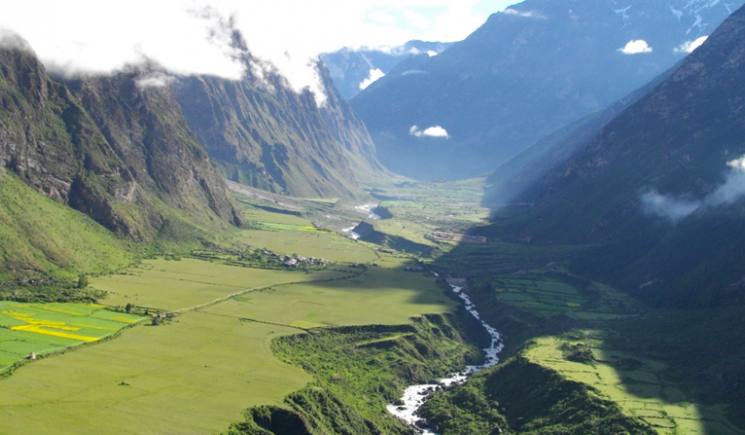
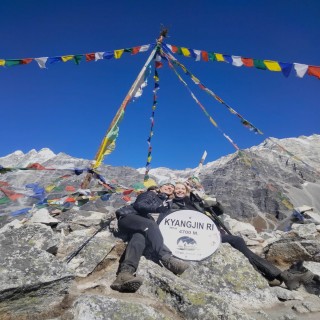
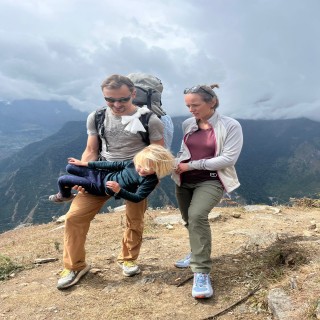
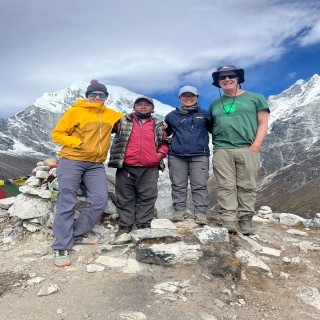
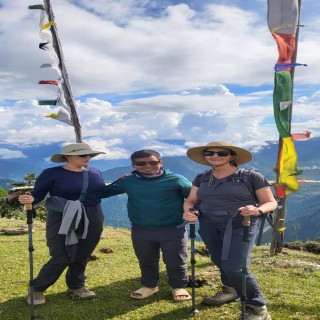
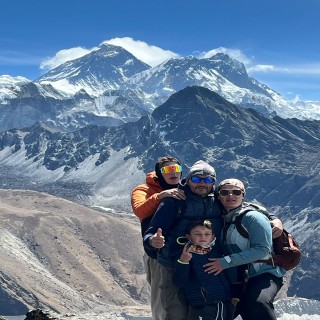
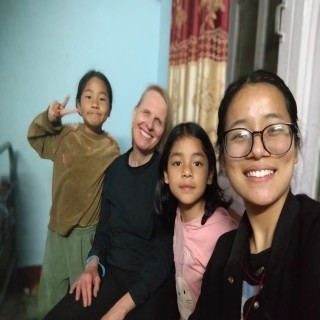
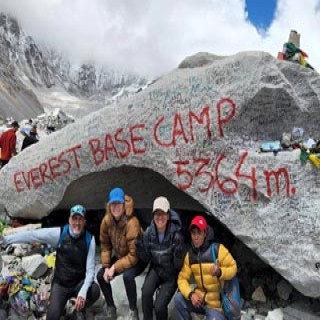
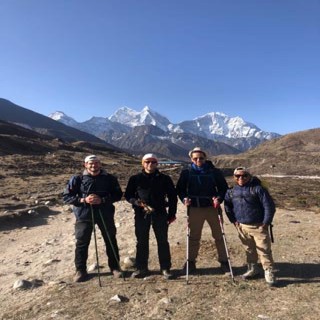
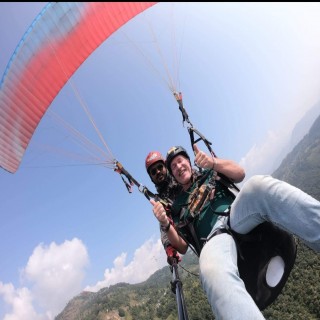
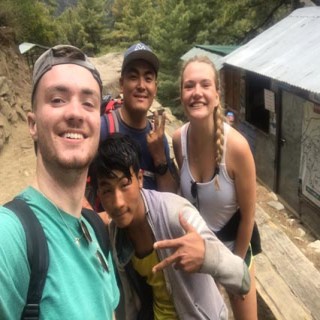
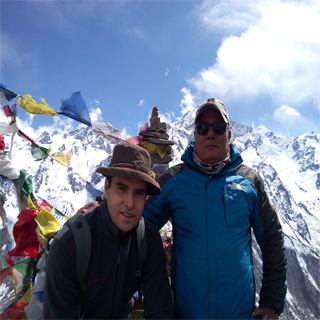
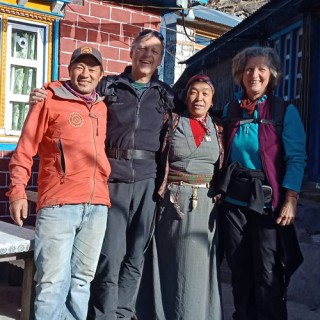
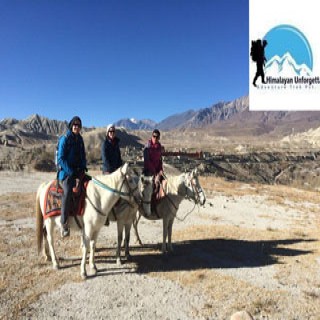
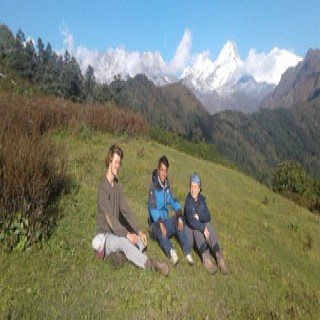
.jpg)
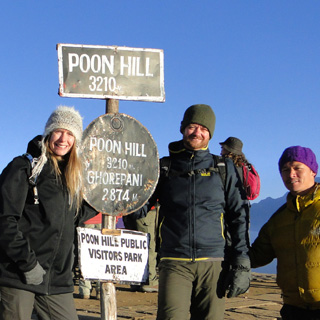
.jpg)


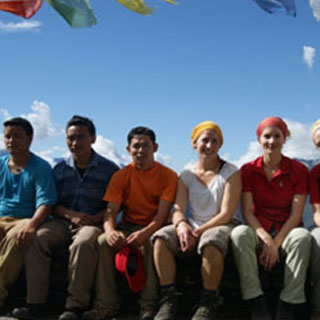
.jpg)

